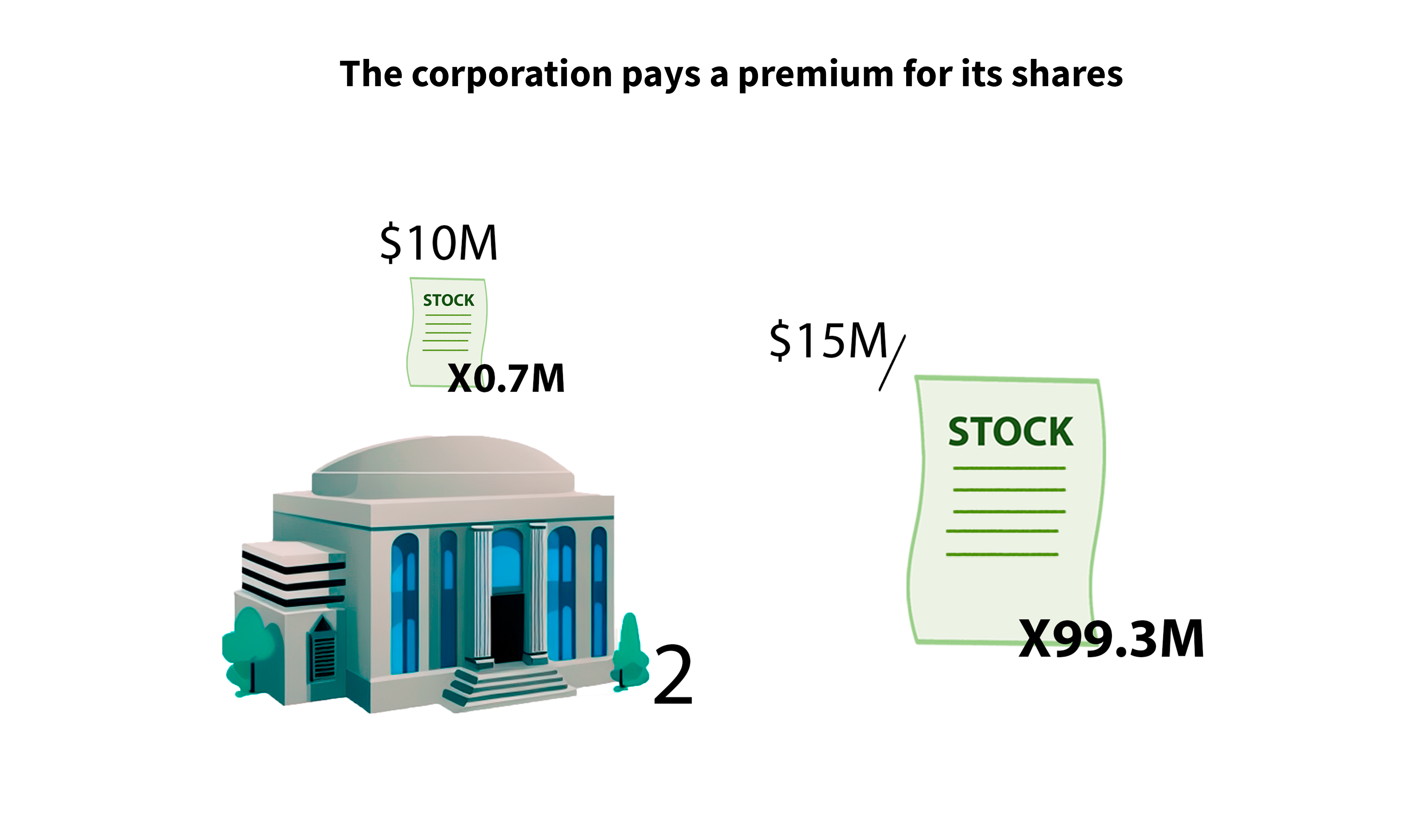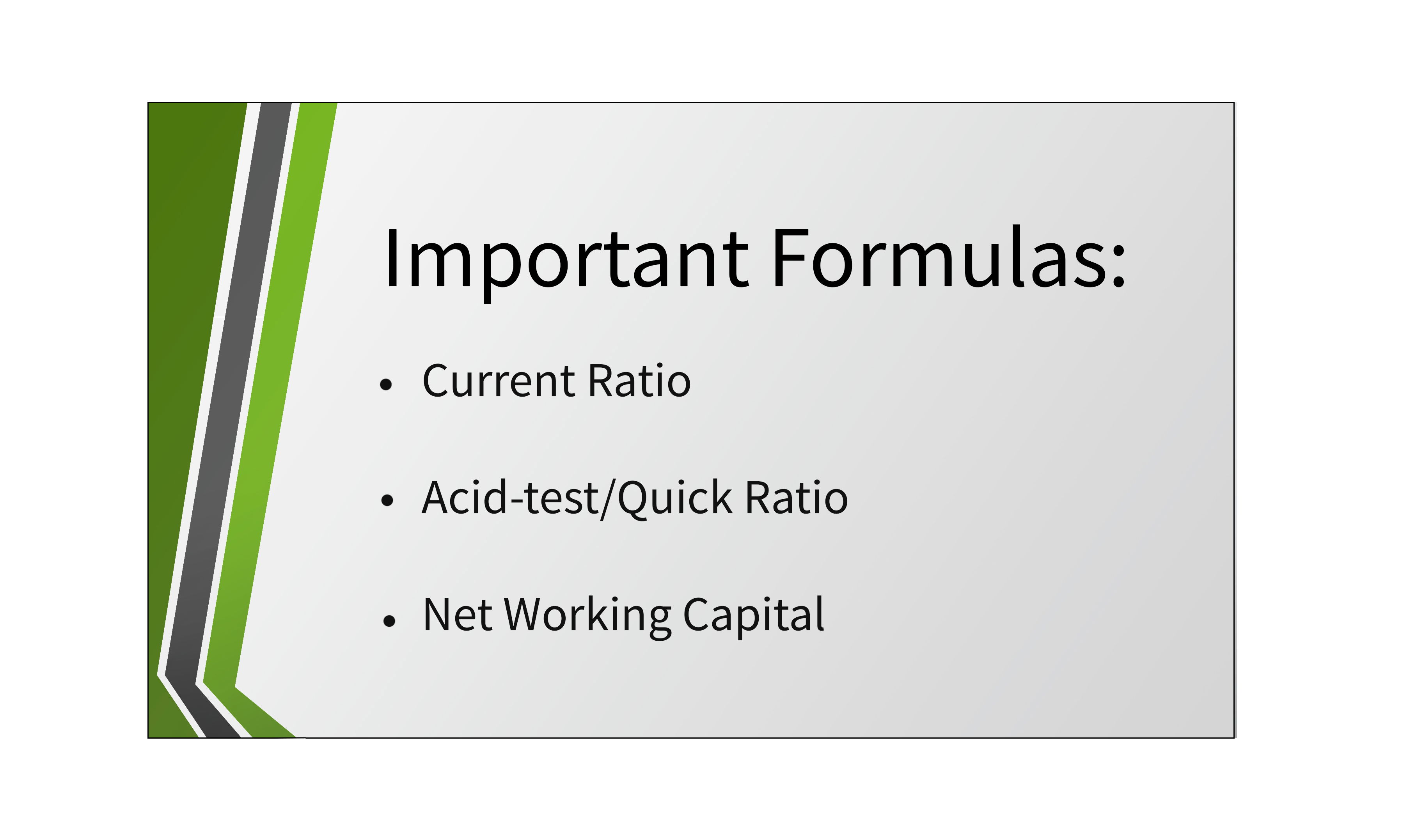
Why are the current ratio, acid-test ratio, and net working capital important equations in financial analysis?
Let’s start by defining the term "current". In accounting, the term current means within one year, or anything expected to be used or settled within one year of the purchase or acquisition.
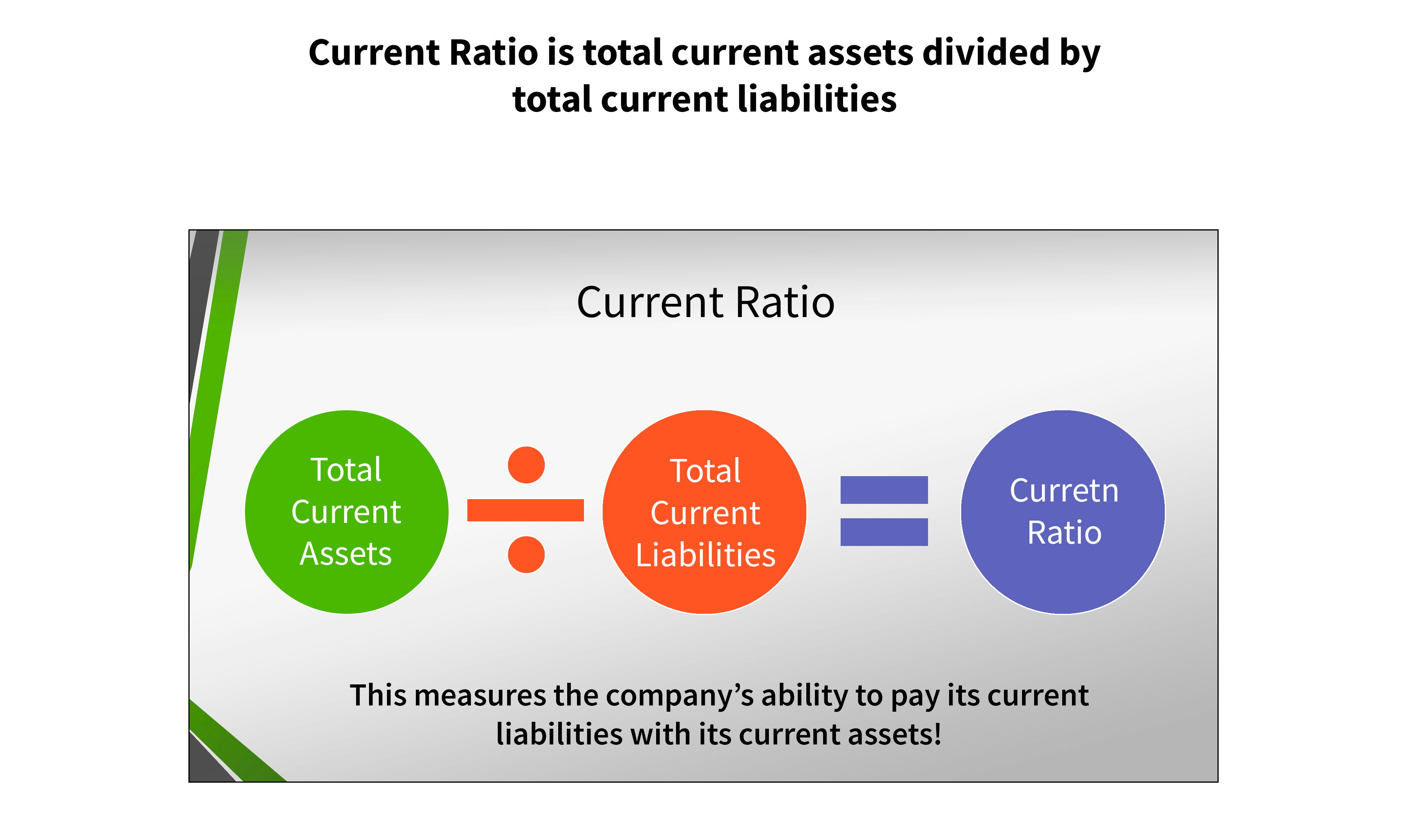
The Current Ratio is total current assets divided by total current liabilities. This measures the company's ability to pay its current liabilities with its current assets. We typically want this to be a pretty high number.
The current ratio calculates a company's ability to pay near-term obligations due within one year to assess its short-term financial health. In general, it is acceptable if the ratio is in line with or slightly higher than the industry average; however, if it is lower, it may indicate an increased risk of default or distress. If the ratio is significantly higher than its peers, it could indicate that management is not effectively utilizing assets.
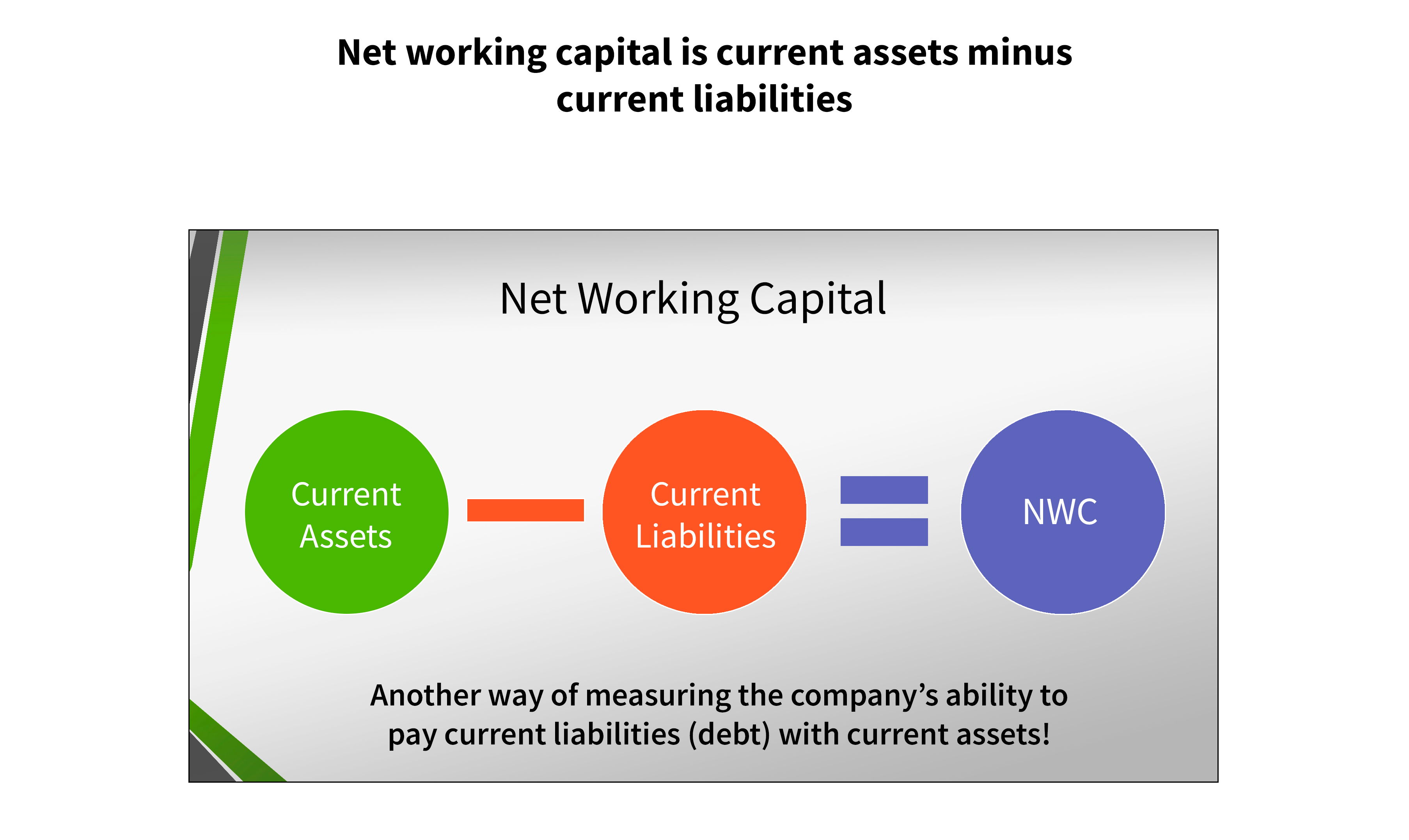
Net working capital is current assets minus current liabilities. This is another way of measuring the company's ability to pay current liabilities with current assets. It is a measure of operating liquidity and you want to have sufficient assets over liabilities. This proves you have the assets to pay off your debt.
It's important to understand the significance of net working capital as it can tell us something about a business' liquidity - whether they have enough money to fulfill their short-term obligations. If the figure is positive or zero, they can pay their bills; if the figure is negative, they can't. This makes it important to regularly track the net working capital figure and establish trends in your business' liquidity over time.
If your business has a positive net working capital, that's a sign of good financial health, whereas a negative net working capital suggests bankruptcy may be looming. Additionally, you can use this figure to assess how quickly your company can grow - if you have substantial capital reserves, you can efficiently invest in equipment and expand your operations.
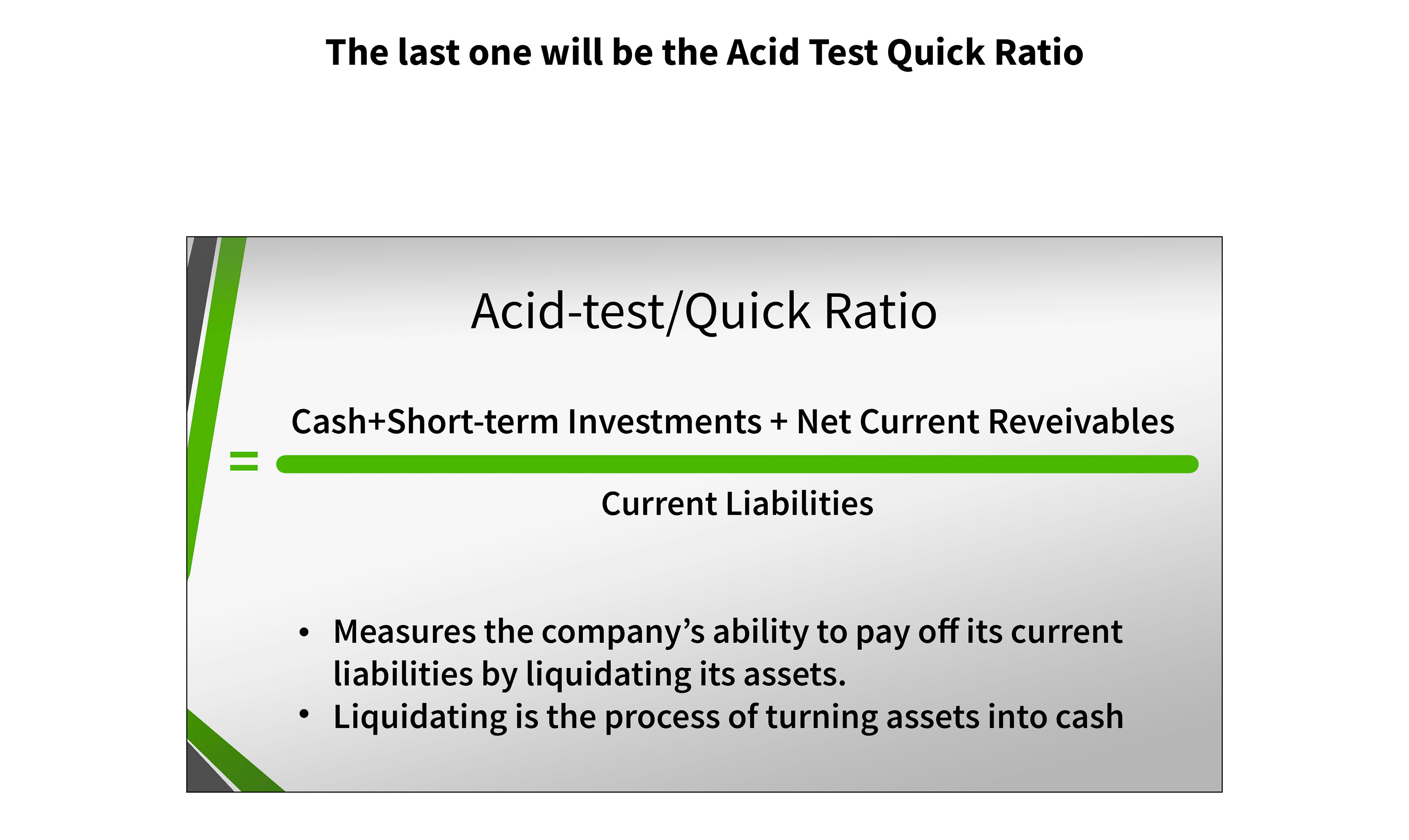
The last one will be the Acid Test Quick Ratio. You want this number to be between 120 and 150, and anything under one is pretty low. The equation for this one is cash plus short-term investments, plus net current receivables over your current liabilities.
This is your most liquid account and they're all pretty current. This again measures the company's ability to pay off its current liabilities by liquidating its assets. Liquidating is the process of turning assets into cash. It is already liquidated but we consider it part of this equation as well.
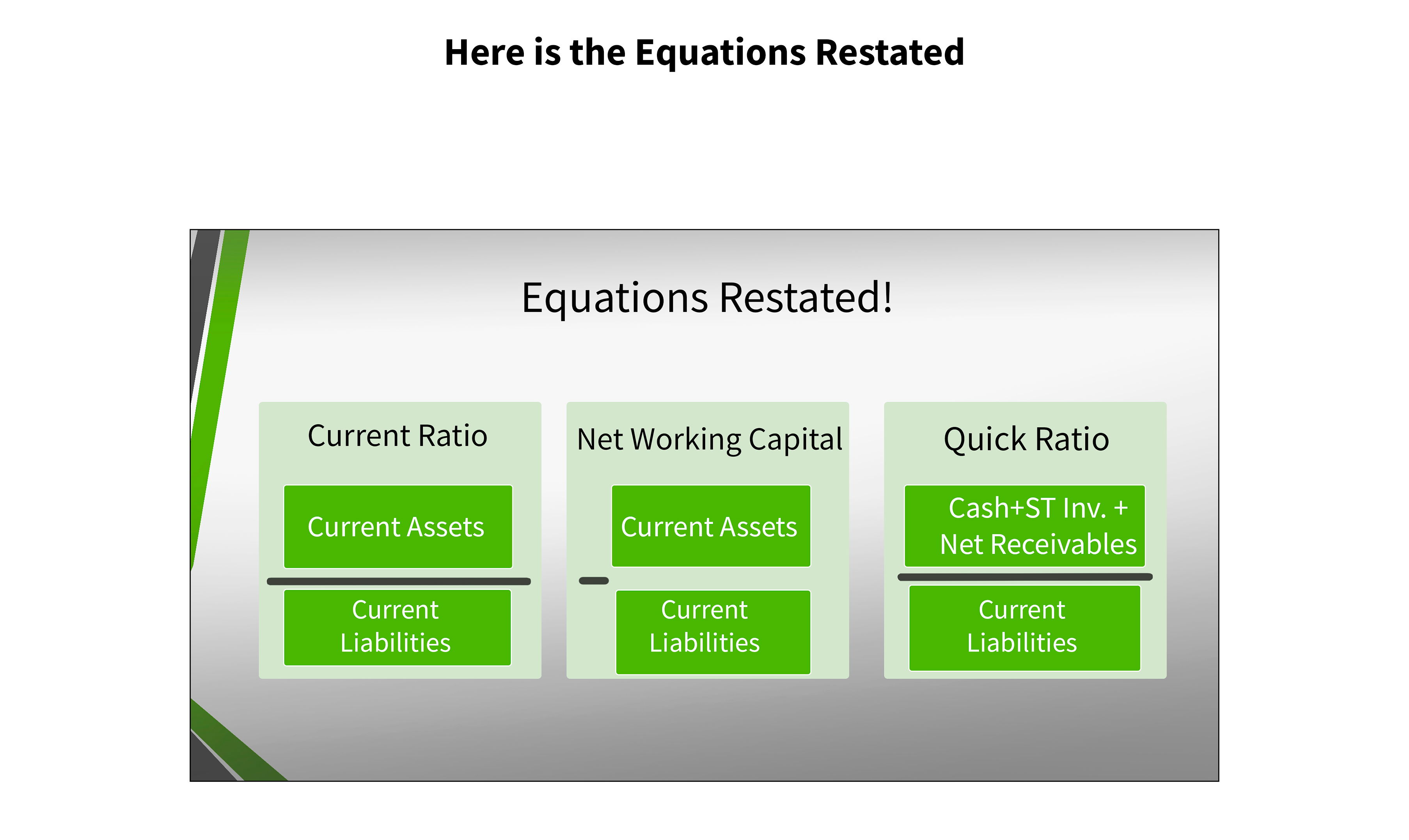
Here is the Equations Restated. Again, the current ratio is your current assets over current liabilities, your networking capital is going to be current assets minus current liabilities, and your quick ratio is cash plus short-term investments plus net receivables over your current liabilities.
Key Takeaways:
1. The Current Ratio measures a company's ability to pay near-term obligations due within one year to assess its short-term financial health.
2. Net working capital is current assets minus current liabilities and is a measure of operating liquidity.
3. The Acid Test Quick Ratio should be between 120 and 150, and is calculated as cash plus short-term investments, plus net current receivables over current liabilities.

